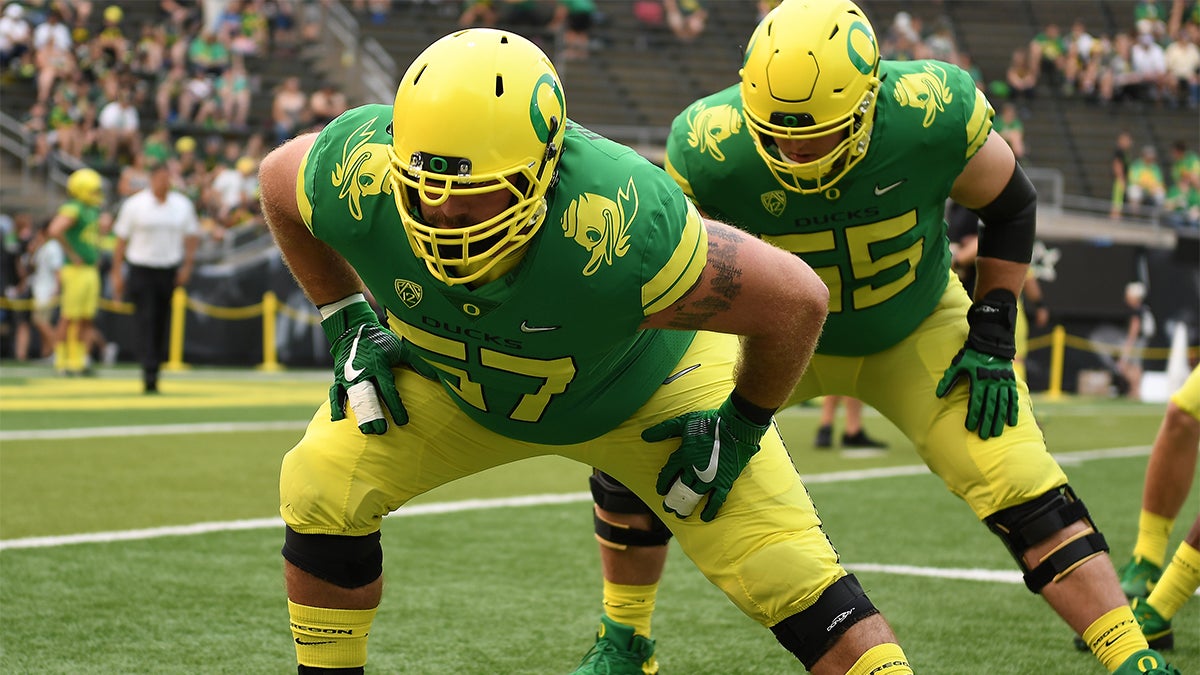Offseason practices can be deadly for college athletes

Football practice shouldn't kill anyone.
But former Oregon offensive lineman Doug Brenner said it nearly killed him and two other players.
Brenner is one of the latest athletes to speak out against intense offseason training regimes. He, along with former teammates Sam Poutasi and Cam McCormick, are suing the University of Oregon, head coach Willie Taggart and the NCAA after the trio were hospitalized following workouts in January 2017.

All three players were diagnosed with Rhabdomyolysis, a syndrome in which muscle fibers break down with “leakage into the bloodstream of muscle contents.”
While the toll college football takes on its players is visible in the fall and early winter, reports show the deadly truth about how spring and summer practice and training sessions can pose a greater risk.
The most common fatalities among college football players are exercise-related deaths when associated with the sickle cell trait (SCT), followed by exertional heat stroke then cardiac conditions.
Both SCT and Rhabdomyolysis are rare conditions that become life threatening when mixed with offseason training and practice.
As well as enforcement of mandated procedures — and, in some cases, lack thereof — that could and have had lasting effects on their players.
For players, the injuries sustained can have a more complicated psychological effect on the athletes on their road to recovery.
In the past 18 years, 34 players have died, 27 from non-traumatic injuries and seven from trauma to the head or neck, across college football, accounting for 0.0004 percent of all collegiate football players in the NCAA. The 32-team NFL has had one death in that timeframe, a rate that equals 0.0006 percent of NFL players during the 18-year period.
Ideally, there would be no deaths caused by practicing or training. The fact there are has led to questions regarding the accountability of college football athletes and the responsibilities of their schools and the football coaching staff.
“One of the factors is the players have no representation at the college level. There’s no union; nobody to look out for them in terms of making sure we don’t have ridiculous strength and conditioning sessions,” said Dr. Douglas Casa, CEO of the Korey Stringer Institute at the University of Connecticut.
The majority of these deaths came from preventable problems, such as heat stroke, as the result of negligence or lack of care from coaches. The remedy for saving the lives of the athletes was simply put by Dr. Douglas Casa, who is among the leading experts in sudden death in sports.
“A tub, ice and water would have saved their child's life. That simple,” he said of Jordan McNair, the Maryland football player who died of heat stroke in 2018.
Despite the deaths, the NCAA has avoided mandates regarding safety guidelines for weight training or for conditioning coaches. The lack of guidelines has left the schools of the fallen athletes to deal with only the discipline of potential lawsuits or of writing a substantial check.
Beginning to test athletes for sickle cell anemia after the death of Rice University football player Dale Lloyd II in 2010 was a step in the right direction for the organization.
Dr. Casa and the Stringer Institute specialize in heat stroke and its relationship to player fatalities. The institute produced a recommendations list that detailed how these types of fatalities could be prevented and sent them to the NCAA in 2012.
The list wasn’t considered by the NCAA until 2016 when an NCAA spokesperson said: “best practices currently being reviewed are the result of an NCAA-hosted information-gathering summit.”
The Stringer Institute recommended:
- Acclimatize Progressively for Utmost Safety
- Introduce New Conditioning Activities Gradually
- Do Not Use Exercise and Conditioning Activities as Punishment
- Ensure Proper Education, Experience, and Credentialing of S&CCs
- Provide Appropriate Medical Coverage
- Develop and Practice EAPs
- Be Cognizant of Medical Conditions
- Administer Strength and Conditioning Programs
- Partner With Recognized Professional Organizations
- Provide Adequate Continuing Education for the Entire Coaching and Medical Teams
In January 2019, the NCAA board of governors gave initial approval to a measure aimed at preventing non-traumatic deaths in offseason workouts. Fourteen medical organizations reviewed the proposal and suggested amendments.
The remaining reviews were expected to be handed in by the end of January, preserving expectations that a document will be put forth by late spring.
Trej Bell is a junior sports journalism major at Arizona State University
Related Articles
If player deaths aren't enough, what will change coaching culture?


